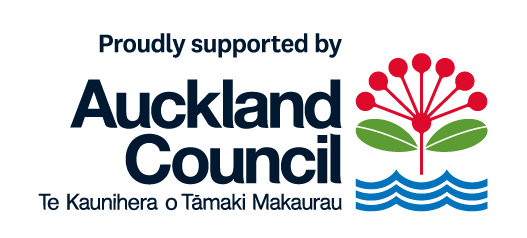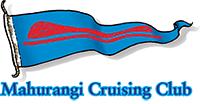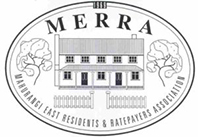Small buoys create Sullivans Bay fairway
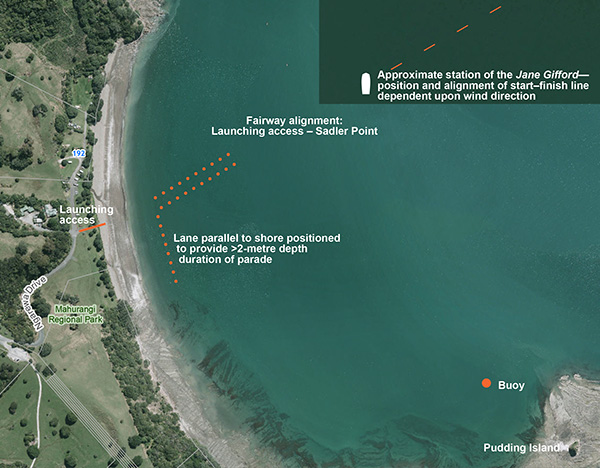
Small Buoys on Trial in Sullivans: While it will cause some inconvenience for boats anchoring in Sullivans Bay—also known as Ōtarawao—establishing a fairway between the beach and the Mahurangi Regatta flagship, the Jane Gifford, should bring multiple benefits, including allowing for a parade of classic craft close-by the shoreline. image Auckland Council GIS | Mahurangi Magazine
It may take a year or two to take. The aim is to provide a fairway to allow craft to race or parade past the beach, so as to provide shoreside spectators with a—spectacle.
At this year’s Mahurangi Regatta, as well as the four-decade-long practice of buoying off an area parallel the shoreline at the south end of the beach, organisers will buoy a connecting fairway from there, out through the anchorage.
The laying of the buoys, it was soon discovered, was a job that couldn’t be left until the morning of the regatta. If the wind was from a westerly quarter, there could be upwards of three hundred craft shoehorned into Sullivans Bay, and enough of those of shallow draft and sufficiently near the shoreline that, especially of a low tide, there was no room left in which to run the dinghy and swimming races, without prevailing upon a dozen or so boat skippers to re-anchor.
The drawback of marking off the events area on the Friday afternoon is that that boats arriving after dark, such as those that have raced from the Waitematā on Friday evening but in light, headwind conditions, can easily not notice the carefully laid buoys. This will be a particular likelihood in respect to this year’s fairway marking, running roughly northeast–southwest through the anchorage. The good news is that if the anticyclone that is due to occupy the Tasman Sea is roughly where the 10-day forecast currently puts it, the Friday afternoon sailors should arrive well before nightfall. The anchorage demarcation should then be reasonably apparent to any after-dark arrivals.
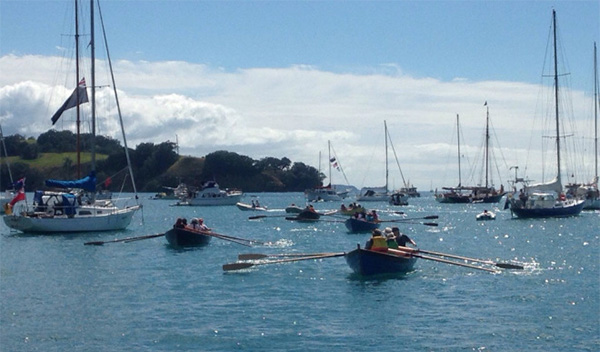
Saved by the Easterly: The arrival of the St Ayles skiffs at Sullivans Bay, during the 2016 regatta, was aided by the easterly conditions—had Sullivans Bay been the anchorage of choice, as opposed to the opposite sheltered shore, those long sweeps would have been a distinct liability, as the boats attempted to thread their way through the fleet. With luck, this year, the St Ayles skiffs in attendance will get to test the new fairway. image Tanya Ankersmit
It is hoped that the new, marked fairway will, in time, attract a veritable fleet of classic wooden boats, sail boats, and other craft, to parade past the beach. It may take a year or two before some owners are on board with it—confident that the way will be clear and that they won’t risk lynching after, for example, some hapless child on an air lounge was wafted, from nowhere, under their bow. But draft is also an issue. Some of the lovelier old launches need a depth of nearly two-metres of water, to be comfortable.
Meantime, the entirely reasonable-sounding alternative to a lane through the anchorage, extend threshold shoreside lane to the up-harbour end of the beach, was actually tried. What proved to be entirely unreasonable was that then meant those who had craft that need to be anchored within wading distance, had nowhere to go. That was only attempted once and, properly, was ignored.
An added benefit of the access lane through the anchorage is that it should provide a good view of the yacht racing start line. This will aid the announcer to increasingly keep tabs on the progress of the yacht racing, including pointing out to onlookers that the best view of the start–finish line is, of course, not from sea level, but from the 60-metre higher vantage of the clifftop at Tungutu Point. Stood there is the next best thing to being in a hot-air balloon—something yet to be seen, and not for no good reason, above a Mahurangi Regatta. On the other hand, a small airship…
Laying the buoys is one of the many regatta chores that, from the regatta director’s perspective, goes like clockwork every year, thanks, in this example, to Brad, Braden and Oliver Wynyard, a family with strong connections to Mahurangi and Waiwera, and descendants of a onetime acting governor, when self-government of the former colony was very much in its infancy. As well as their annual buoy-laying chores, the Wynyard father and sons have probably collectively racked up more Mahurangi Regatta wins and places than any family in the history of the at-least-159-year-old event. And if, to that, is added the Auckland Anniversary weekend Sunday Jamieson–Ōpahi bays fishing competition, the family’s supremacy is a certainty.
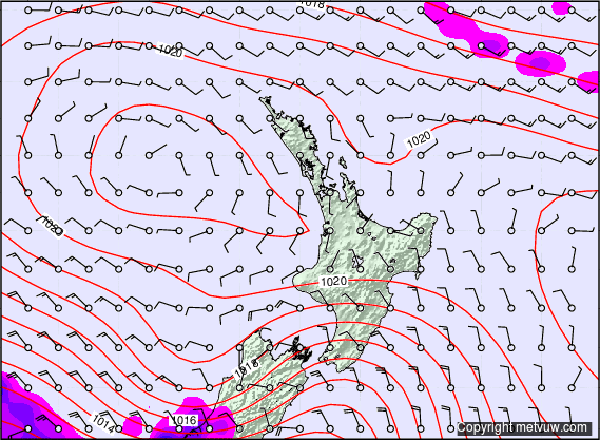
Pressure is Good: Although much can change in 10 days, the current MetVUW forecast for Saturday 28 January would do very nicely for the 2017 Mahurangi Regatta, not least of all because it would provide rather favourable conditions for the first trial of the regatta parade fairway. image MetVUW
If all regatta roles were so sublimely self-organising, Mahurangi Action’s new shoreside regatta director, Caitlin Owston-Doyle, would have nothing to do. While the list of volunteers is looking moderately promising, gaps that absolutely need filling have a habit of appearing at short notice—it is peak holiday season, after all, and as surprising as it might seem to the event’s adherents, life does exist beyond the Mahurangi Regatta. One gap that mercifully closed no sooner than it opened was for one of the shifts driving the free Scotts Landing regatta shuttlebus, which operates from midday to midnight, to reduce the bedlam that otherwise prevails there as too many people wedded to too many cars attempt to discover that one parking spot with their name on it, long after every half-reasonable prospective space has been exploited, plus a dumbfounding half-dozen wholly preposterous ones. Until the regional parks management hired a security firm to police the parking at the landing, parking on the launching ramps, and across the vehicle entrance to Scott Homestead had been attempted. Given that the band, which this year for the first time will be playing under its new name—West City Jazz Orchestra—plays for costs, causing the 18 or more musicians to carry their instruments the last 300 metres to the marquee, never mind what they were expected to do with their vehicles…

Dog-Free Regatta: The beach and picnic area at Sullivans Bay, at all times, is off-limits to dogs, as is the grassed area at Scotts Landing, but only on the day and evening of the regatta. image Mahurangi Magazine
The challenge of recruiting sufficient volunteers to ensure that those who do, don’t find themselves run ragged and unwilling to repeat the experience, tends to become all-consuming for organisers. This can result in a failure to adequately acknowledge that without the considerable contribution of the regional park management and rangers, the smooth running of the regatta would be monumentally more demanding. Aside from the responsibility and work involved in hosting more than two thousand park visitors, the rangers launch and retrieve dozens of craft involved in the regatta—the only day of the year that boats are vehicle-launched within the park. And in consideration of it being an historic and community event, $9986 of application, processing and other site fees—and the cost of the aforementioned management of Scotts Landing parking—are waived. This is in addition to the $4000 received from Auckland Council’s regional events fund.
As readers by now will surely have suspected, this article, in addition to being a heads-up for those anchoring in Sullivans Bay, is by way of a further call for volunteers.
Shoreside Regatta Director Caitlin can be contacted via the comment form below.
Mahurangi Regatta supporters and collaborators
Auckland Council
Browns Bay Boating Club
Bucklands Beach Yacht Club
Classic Yacht Association
Corporate AV Services
Devonport Yacht Club
Ester Electrical – Scotts Landing prize-giving-and-dance lighting
Gulf Harbour Yacht Club
Mahurangi Action—principal organiser, revived regatta in 1977
Mahurangi Cruising Club—host club and sailing organiser
Mahurangi East Residents and Ratepayers Association—co-host of prize giving and dance
Mahurangi Oyster Farmers Association
Milford Cruising Club
Nautica Shipping & Logistics
New World Warkworth
Panmure Yacht and Boating Club
Pine Harbour Cruising Club
Prestige Loos
Richmond Yacht Club
Royal New Zealand Yacht Squadron
Sandspit Yacht Club
Teak Construction—principal regatta sponsor
Weiti Boating Club
West City Jazz Orchestra

